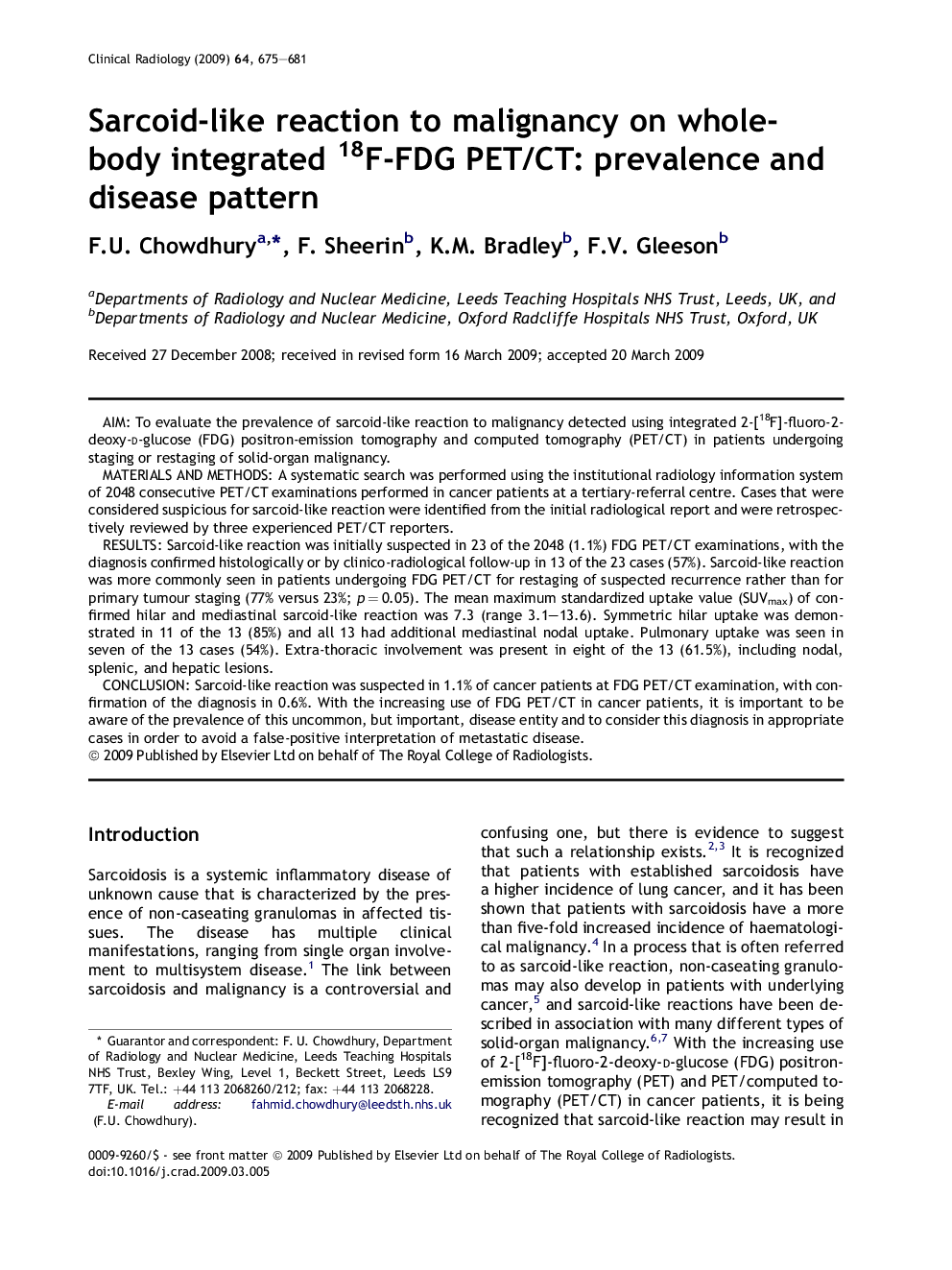| Article ID | Journal | Published Year | Pages | File Type |
|---|---|---|---|---|
| 3984166 | Clinical Radiology | 2009 | 7 Pages |
AimTo evaluate the prevalence of sarcoid-like reaction to malignancy detected using integrated 2-[18F]-fluoro-2-deoxy-d-glucose (FDG) positron-emission tomography and computed tomography (PET/CT) in patients undergoing staging or restaging of solid-organ malignancy.Materials and methodsA systematic search was performed using the institutional radiology information system of 2048 consecutive PET/CT examinations performed in cancer patients at a tertiary-referral centre. Cases that were considered suspicious for sarcoid-like reaction were identified from the initial radiological report and were retrospectively reviewed by three experienced PET/CT reporters.ResultsSarcoid-like reaction was initially suspected in 23 of the 2048 (1.1%) FDG PET/CT examinations, with the diagnosis confirmed histologically or by clinico-radiological follow-up in 13 of the 23 cases (57%). Sarcoid-like reaction was more commonly seen in patients undergoing FDG PET/CT for restaging of suspected recurrence rather than for primary tumour staging (77% versus 23%; p = 0.05). The mean maximum standardized uptake value (SUVmax) of confirmed hilar and mediastinal sarcoid-like reaction was 7.3 (range 3.1–13.6). Symmetric hilar uptake was demonstrated in 11 of the 13 (85%) and all 13 had additional mediastinal nodal uptake. Pulmonary uptake was seen in seven of the 13 cases (54%). Extra-thoracic involvement was present in eight of the 13 (61.5%), including nodal, splenic, and hepatic lesions.ConclusionSarcoid-like reaction was suspected in 1.1% of cancer patients at FDG PET/CT examination, with confirmation of the diagnosis in 0.6%. With the increasing use of FDG PET/CT in cancer patients, it is important to be aware of the prevalence of this uncommon, but important, disease entity and to consider this diagnosis in appropriate cases in order to avoid a false-positive interpretation of metastatic disease.
